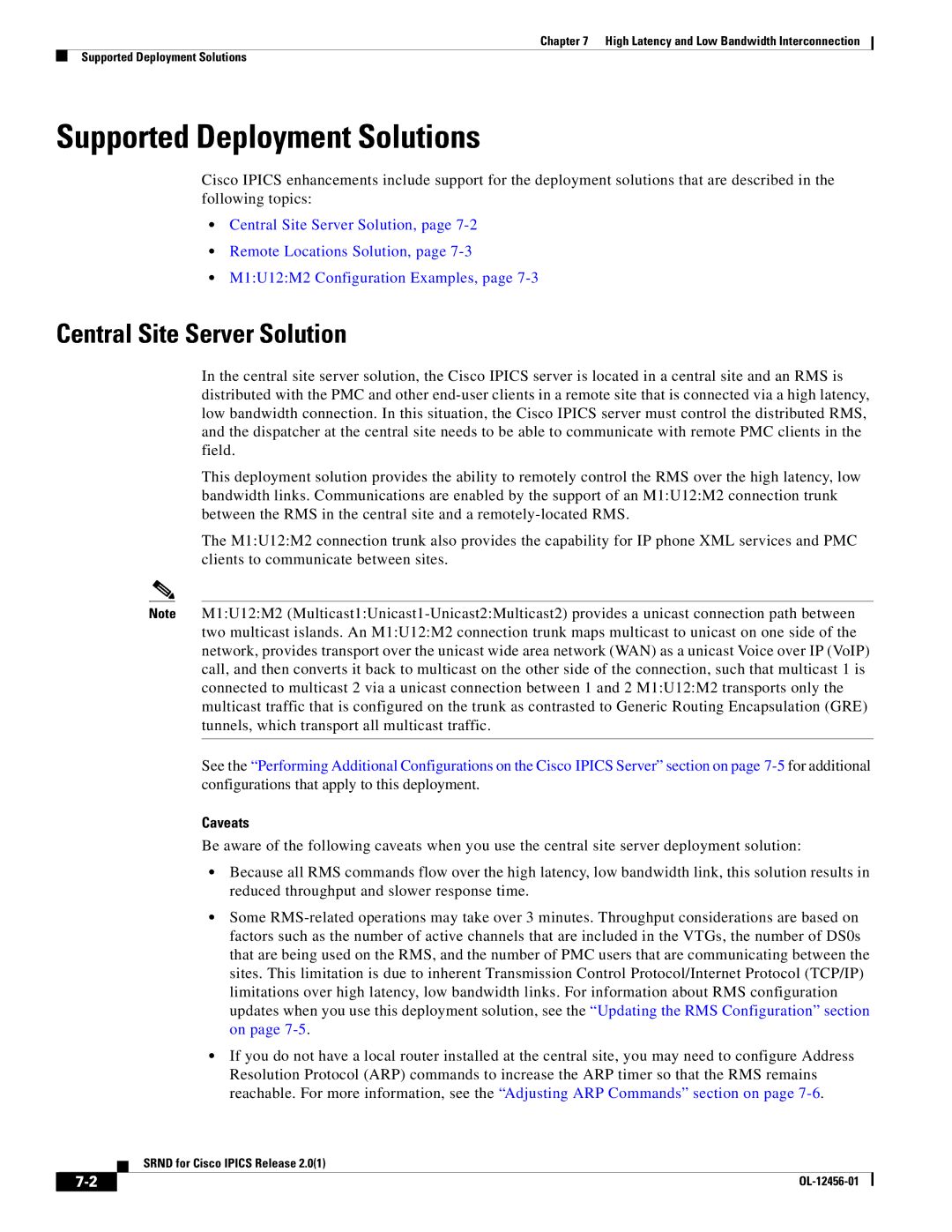Chapter 7 High Latency and Low Bandwidth Interconnection
Supported Deployment Solutions
Supported Deployment Solutions
Cisco IPICS enhancements include support for the deployment solutions that are described in the following topics:
•Central Site Server Solution, page 7-2
•Remote Locations Solution, page 7-3
•M1:U12:M2 Configuration Examples, page 7-3
Central Site Server Solution
In the central site server solution, the Cisco IPICS server is located in a central site and an RMS is distributed with the PMC and other end-user clients in a remote site that is connected via a high latency, low bandwidth connection. In this situation, the Cisco IPICS server must control the distributed RMS, and the dispatcher at the central site needs to be able to communicate with remote PMC clients in the field.
This deployment solution provides the ability to remotely control the RMS over the high latency, low bandwidth links. Communications are enabled by the support of an M1:U12:M2 connection trunk between the RMS in the central site and a remotely-located RMS.
The M1:U12:M2 connection trunk also provides the capability for IP phone XML services and PMC clients to communicate between sites.
Note M1:U12:M2 (Multicast1:Unicast1-Unicast2:Multicast2) provides a unicast connection path between two multicast islands. An M1:U12:M2 connection trunk maps multicast to unicast on one side of the network, provides transport over the unicast wide area network (WAN) as a unicast Voice over IP (VoIP) call, and then converts it back to multicast on the other side of the connection, such that multicast 1 is connected to multicast 2 via a unicast connection between 1 and 2 M1:U12:M2 transports only the multicast traffic that is configured on the trunk as contrasted to Generic Routing Encapsulation (GRE) tunnels, which transport all multicast traffic.
See the “Performing Additional Configurations on the Cisco IPICS Server” section on page 7-5for additional configurations that apply to this deployment.
Caveats
Be aware of the following caveats when you use the central site server deployment solution:
•Because all RMS commands flow over the high latency, low bandwidth link, this solution results in reduced throughput and slower response time.
•Some RMS-related operations may take over 3 minutes. Throughput considerations are based on factors such as the number of active channels that are included in the VTGs, the number of DS0s that are being used on the RMS, and the number of PMC users that are communicating between the sites. This limitation is due to inherent Transmission Control Protocol/Internet Protocol (TCP/IP) limitations over high latency, low bandwidth links. For information about RMS configuration updates when you use this deployment solution, see the “Updating the RMS Configuration” section on page 7-5.
•If you do not have a local router installed at the central site, you may need to configure Address Resolution Protocol (ARP) commands to increase the ARP timer so that the RMS remains reachable. For more information, see the “Adjusting ARP Commands” section on page 7-6.
SRND for Cisco IPICS Release 2.0(1)

